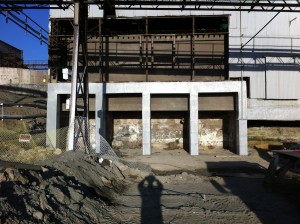
Many industrial businesses in Arizona use carbon fiber in their structures and in their manufacturing processes. Carbon fiber reinforcement is a particular popular technique used in industrial construction and restoration.
Here’s a little more detailed information about carbon fiber to help you understand what this material is and how it can be beneficial:
Characteristics of Carbon Fiber
Carbon fiber is basically what it sounds like. It consists of very thin strands of carbon, which can be twisted together like yard and then woven together like a fabric.
The strands are similar in composition to graphite, but are much stronger. The carbon atoms in the fibers are bonded together in a pattern that is parallel to the strand itself. The crystalline arrangement gives the strand strength far greater than its size.
The strands of carbon in carbon fiber are very small — thinner even than human hair. Each strand is about 5 to 10 micrometres in diameter. A micrometre, also called a micron, is equivalent to one thousandth of a millimetre, so it is tiny.
Though carbon fiber strands are tiny, they are extremely strong. The chemical composition of the strands allows them to support great weights and pressure, as well as high temperatures. Carbon fiber is also lightweight and resistant to chemical corrosion.
Industrial Applications
Carbon fiber is about five times stronger than steel and about twice as stiff. Yet it also weighs about two-thirds less than steel. Its strength and resistance to temperature and chemical changes makes it a popular material for industrial applications, particularly in the aerospace, military and motorsports industries.
Carbon fiber is also popular for industrial construction. The fiber can be placed on a mold and coated with another material, such as resin, plastic or concrete. The process gives the fiber shape and strengthens it even more.
Carbon fiber reinforcement can be used to support aging concrete structures, helping to restore industrial operations centers and make them safer. Carbon fiber can be woven into sheets that can be laid over structures such as walls and columns, and concrete can be plastered over it. The structure will look as good as new, and it will be stronger than it likely was originally.
Other structures can be strengthened by the carbon fiber, such as floors, ceilings, storage tanks and low walls. Strands of sheets of the carbon fiber can be woven through the structure inside the concrete casing.
Pride Development and Construction specializes in carbon fiber reinforcement and concrete restoration in Arizona. We can help you build a strong operations facility, whether you are overseeing new construction or want to restore an aging structure. Our services include concrete placement, shot crete application, concrete cutting, structural retrofitting, and — of course – -carbon fiber repair and reinforcement. Our experienced professionals can ensure that your industrial operations not only meet all state and federal regulations but that they also create a safe working environment for your employees. Call us today to learn how we can help your Arizona business.
Published By:
 Pride Development and Construction – Bob Jenkins
Pride Development and Construction – Bob Jenkins
3027 South 45th Street
Phoenix, AZ 85040
Office: (480) 968-6848
Email: bob@pridedc.net
Website: https://pridedevelopment.net

